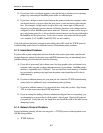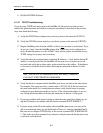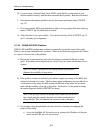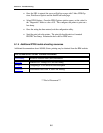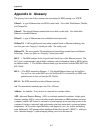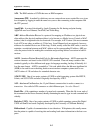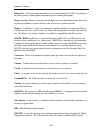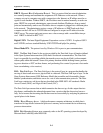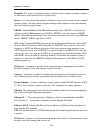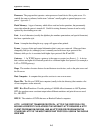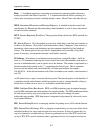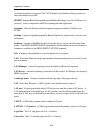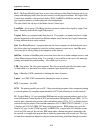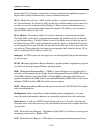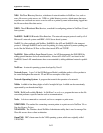
Appendix A: Glossary
A-4
DHCP. Dynamic Host Configuration Protocol. This is a protocol that lets network administra-
tors centrally manage and automate the assignment of IP Addresses on the network. When a
company sets up its computer users with a connection to the Internet, an IP address must be as-
signed to each machine. Without DHCP , the IP address must be entered manually at each com-
puter. DHCP lets a network administrator supervise and distribute IP addresses from a central
point and automatically sends a new IP address when a computer is plugged into a different place
in the network. The administrator assigns a range of IP addresses to DHCP and each client
computer on the LAN has its TCP/IP software configured to request an IP address from the
DHCP server. The request and grant process uses a lease concept with a controllable time pe-
riod. DHCP is defined in RFC 2131.
Digital UNIX. The latest Digital Equipment Corporation version of UNIX. It replaces OSF/1
and ULTRIX, and uses standard Berkeley UNIX TCP/IP and lpr/lpd for printing.
Direct Mode IPX. The protocol used by Windows 95 for peer-to-peer communications.
DLC. The Data Link Control is the service provided by the Data Link Layer of function defined
in the Open Systems Interconnection (OSI) model for network communication. The Data Link
layer is responsible for providing reliable data transfer across one physical link (or telecommuni-
cations path) within the network. Some of its primary functions include defining frames, perform-
ing error detection or ECC on those frames, and performing flow control (to prevent a fast sender
from overwhelming a slow receiver).
DLL. Data Link Layer. The Data-Link layer is the protocol layer in a program that handles the
moving of data in and out across a physical link in a network. The Data-Link layer is layer 2 in the
Open Systems Interconnect (OSI) Reference Model that assembles and disassembles frames,
handles synchronization, and detects errors for a set of telecommunication protocols. The Data-
Link layer contains two sub layers that are described in the IEEE-802 LAN standards: Media
Access Control (MAC) and Logical Link Control (LLC).
The Data-Link layer ensures that an initial connection has been set up, divides output data into
data frames, and handles the acknowledgements from a receiver that the data arrived success-
fully. It also ensures that incoming data has been received successfully by analyzing bit patterns at
special places in the frames.
DMA. Direct Memory Access. A high performance computer architecture in which data is
transferred in large blocks between the processor's memory and an external device without any
processor intervention.
DOS. Disk Operating System; now commonly refers to the PC operating system developed by
Microsoft that is officially called MS-DOS.



